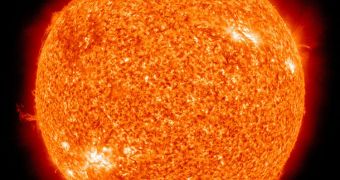An international group of investigators was recently able to produce the most accurate measurements on the radius of the Sun. In order to do that, the team used an unconventional approach, which other scientists did not have access to during previous studies.
Scientists in Hawaii, California and Brazil used the NASA Solar and Heliospheric Observatory (SOHO) spacecraft to time the transits of Mercury – our solar system's innermost planet – as it was moving across the surface of the Sun.
Mercurial transits are somewhat rare, in the sense that they only occur 12 or 13 times every 100 years. The team had access to transit data collected by the Michelson Doppler Imager (MDI) solar telescope aboard SOHO in 2003 and 2006.
This allowed them to establish that the radius of the Sun is 696,342 kilometers (432,687 miles). The level of uncertainty associated with these measurements is just 65 kilometers (40 miles), the smallest ever recorded in such investigations.
The main reason the MDI instrument was used for this study is that it is based on a spacecraft. This enabled the team to bypass the blur that Earth-based instruments see when looking at the Sun through our planet's atmosphere.
Ground-based observations bring a much higher degree of uncertainty in measurements, regardless of whether telescopes are pointed at the Sun, or at extremely distant galaxies. Scientists have since created adaptive optics systems, which cancel out these interferences.
Still, measuring the Sun's radius and diameter from space is still more precise than from the ground.
The investigation was conducted by experts Dr. Marcelo Emilio, Dr. Jeff Kuhn and Dr. Isabelle Scholl, from the University of Hawaii Institute for Astronomy, and Stanford University astronomer Dr. Rock Bush. Emilio is visiting from Ponta Grossa, Brazil, Astrobiology Magazine reports.
“Transits of Mercury occur 12-13 times per century, so observations like this allow us to refine our understanding of the Sun’s inner structure, and the connections between the Sun’s output and Earth’s climate,” Kuhn explains.
Scientists have already started preparing for the next Mercurial transit, which will occur on June 5.

 14 DAY TRIAL //
14 DAY TRIAL //